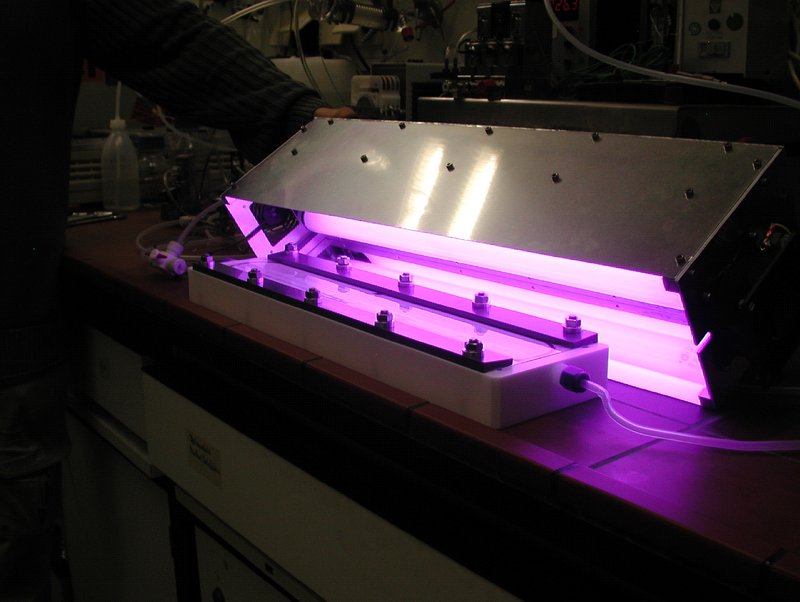Heterogeneous chemistry
Heterogeneous chemistry deals with processes in which different phases are involved. For example, Reactions of gases in liquids (after phase transition) or reactions of gases on solid surfaces are investigated. Heterogeneous chemistry has gained great importance for the atmosphere since the 1980s, since, for example, the so-called "ozone hole" could only be explained with the aid of heterogeneous reactions. A further important example of heterogeneous processes in the atmosphere is the so-called "acid rain", which is caused by the absorption of sulfur dioxide (SO2) and reactive nitrogen compounds (NOy) in water droplets and the subsequent chemistry in the liquid phase.
In physical chemistry in Wuppertal, heterogeneous processes have been investigated for around 15 years. Some examples are listed below:
- Heterogeneous conversion of reactive nitrogen compounds (NOy) to soot surfaces, airborne organic particles and liquid surfaces
- Solubility of gaseous traces (e.g., HONO, HBr, HCl, and HNO3) in liquids (e.g., water, ammonium sulfate solutions, binary and ternary acid mixtures) amongst other things at stratospheric temperatures
- Heterogeneous formation of nitrous acid (HONO) in smog chambers to describe the so-called "background reactivity" in these chambers
- Absorption of nitrous acid (HONO) on plant surfaces
- Photochemical formation of nitrous acid (HONO) on organic substrates (e.g., humic substances)
- Photocatalytic conversion of pollutants to titanium dioxide surfaces (TiO2).

Photo flux reactor in physical chemistry for the investigation of heterogeneous reactions on photocatalysts
